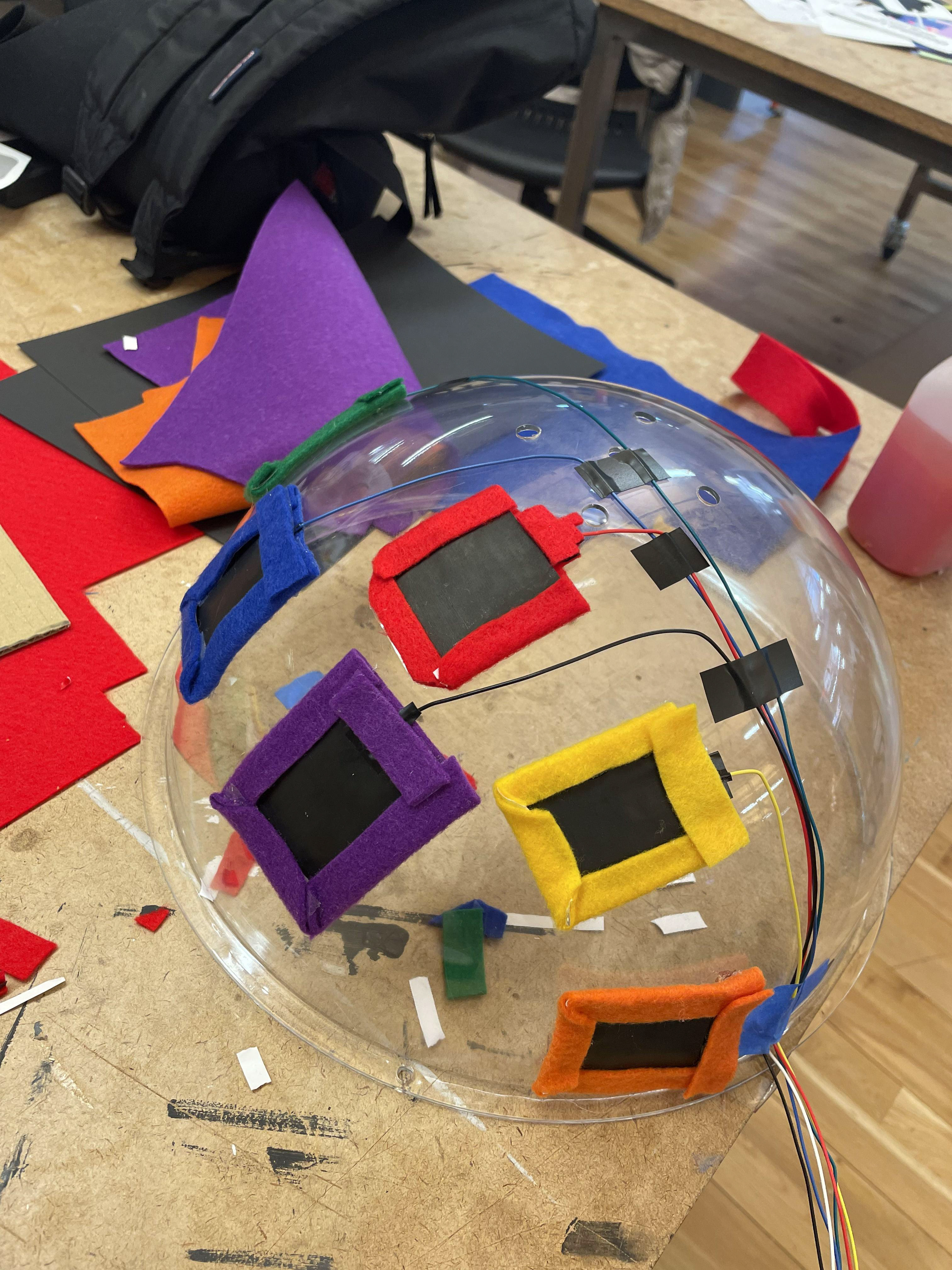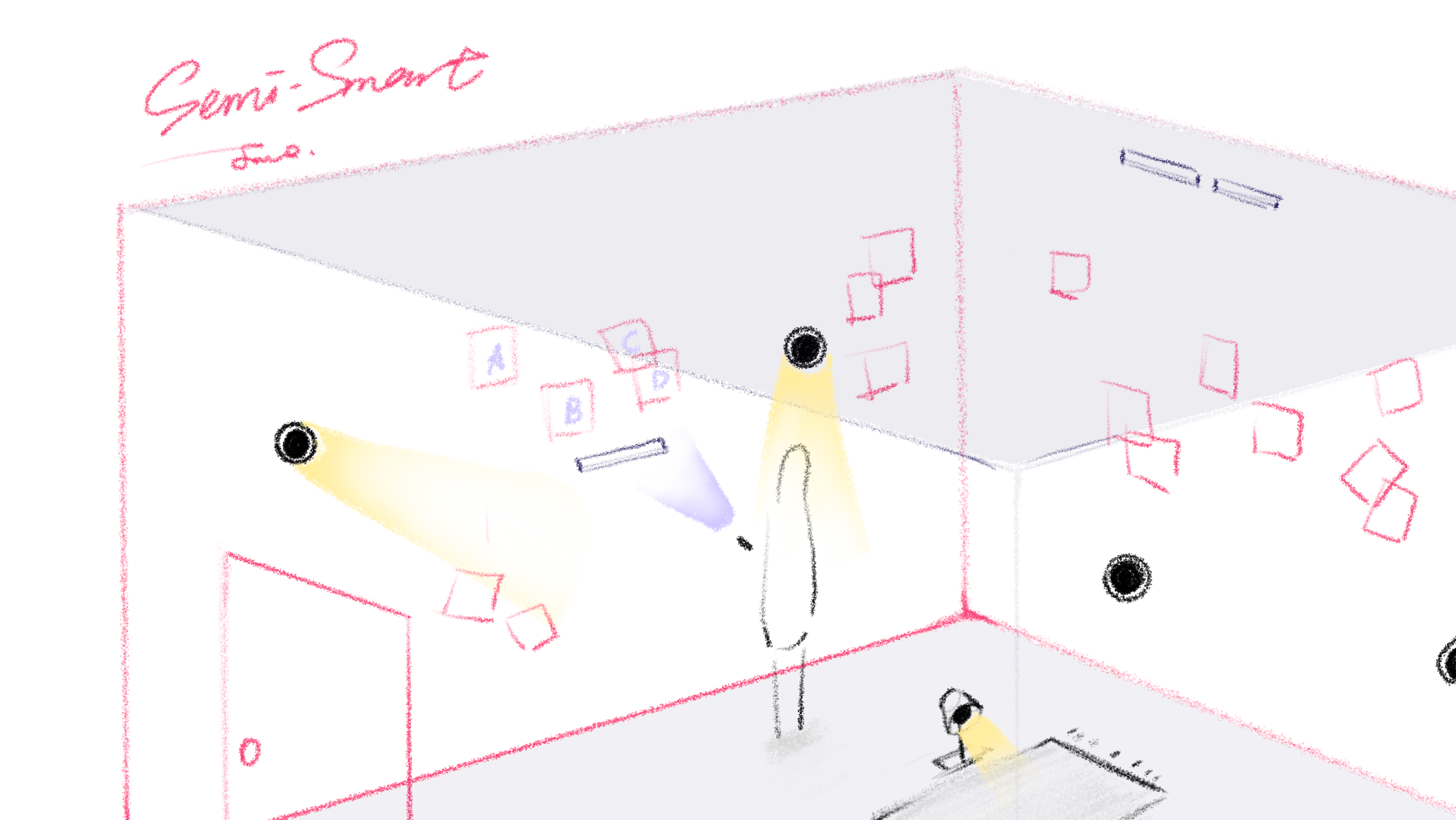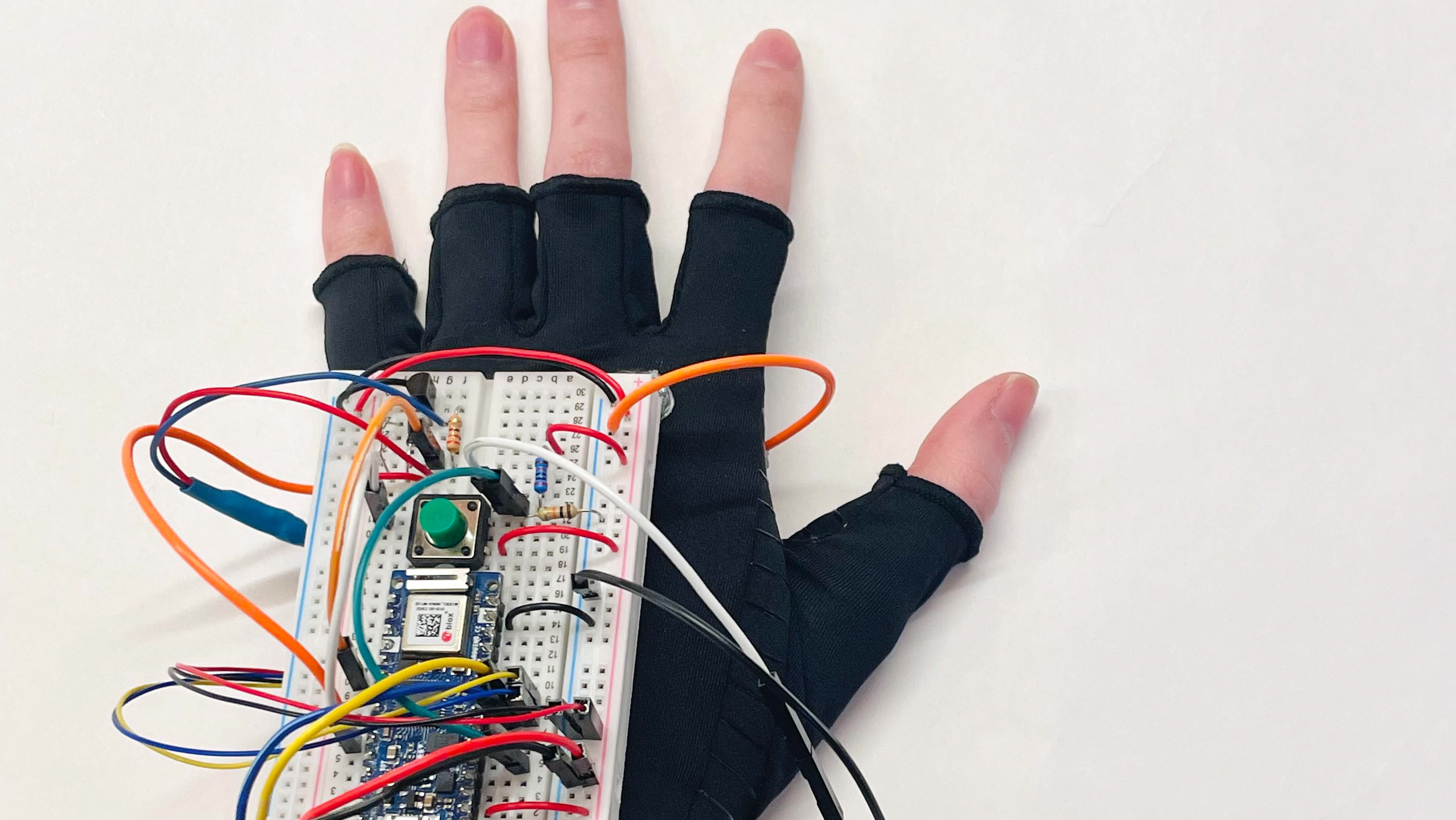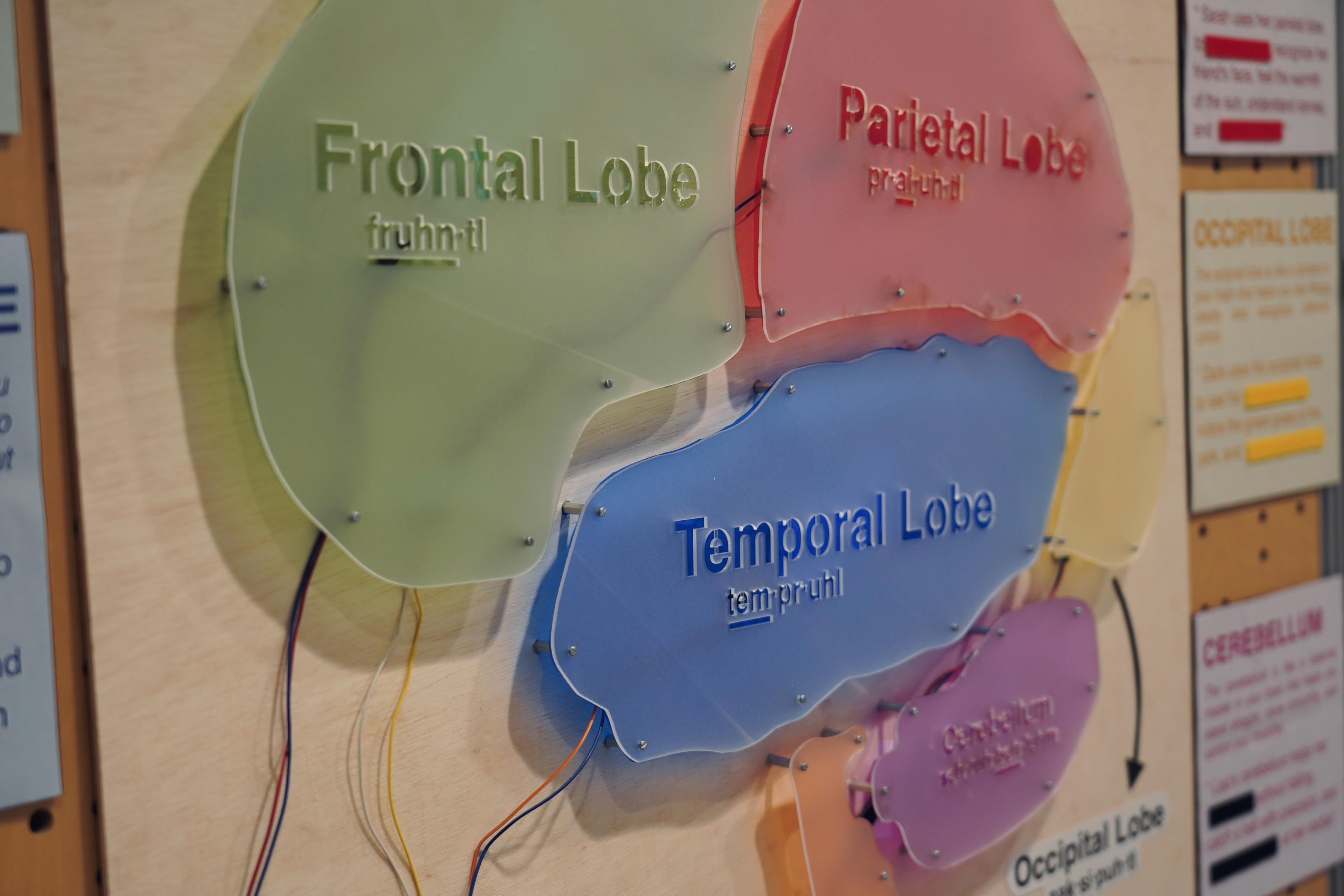
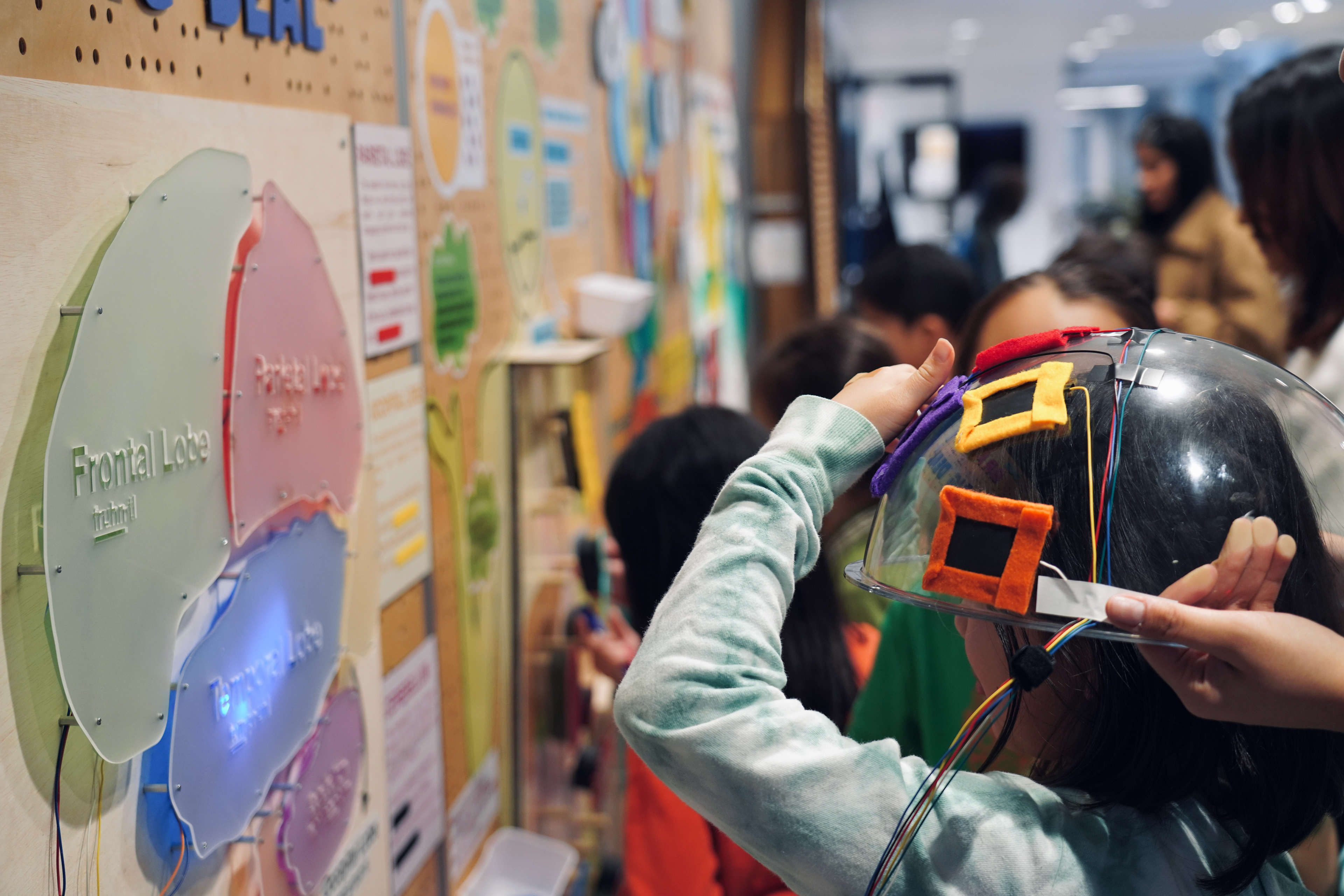


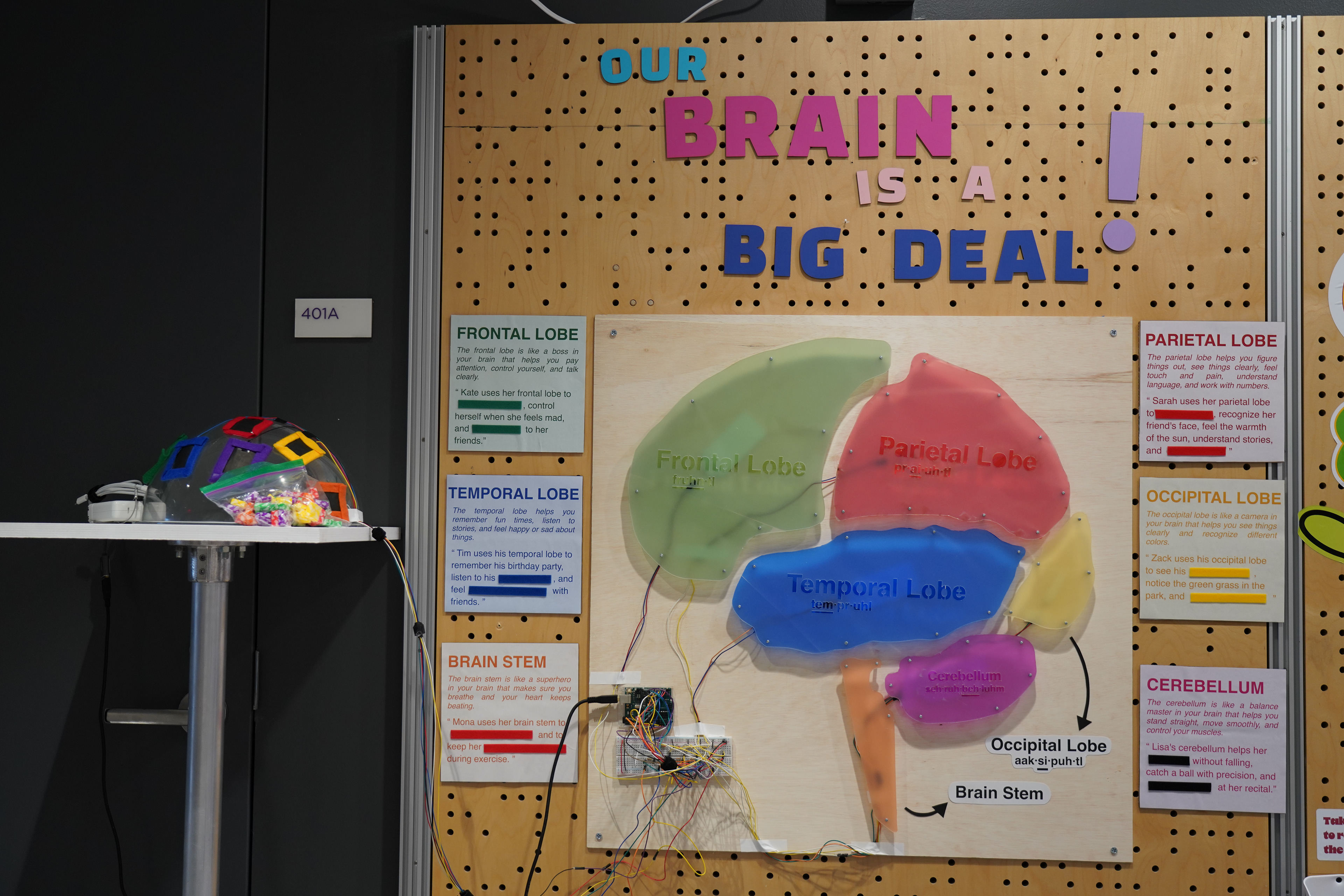
Overview
Our Brain is a Big Deal! is an interactive installation made for NYU Tisch School of the Arts Graduate course: Designing Curiosity Portals. It examines the accessibility of STEM education, aiming to provide a playful, educational, and accessible playground for kids from 6-12 to understand STEM concepts related to brain, cognitive science, neuroscience, and behavioral psychology. The installation is mounted inside 370 Jay St 4th floor, NYU Campus, from March 15th to March 29th, 2024.
Participants have the opportunity to wear a specialized helmet equipped with touchable felt pads. By interacting with specific regions, represented by the touchable pads (conductive paint), corresponding LED panels beneath an acrylic brain model illuminate. Through the aid of color-coded cards, participants can navigate various brain functions, culminating in a brief quiz incorporating real-life scenarios to enhance comprehension.
Design Process and Iteration
Experience Design
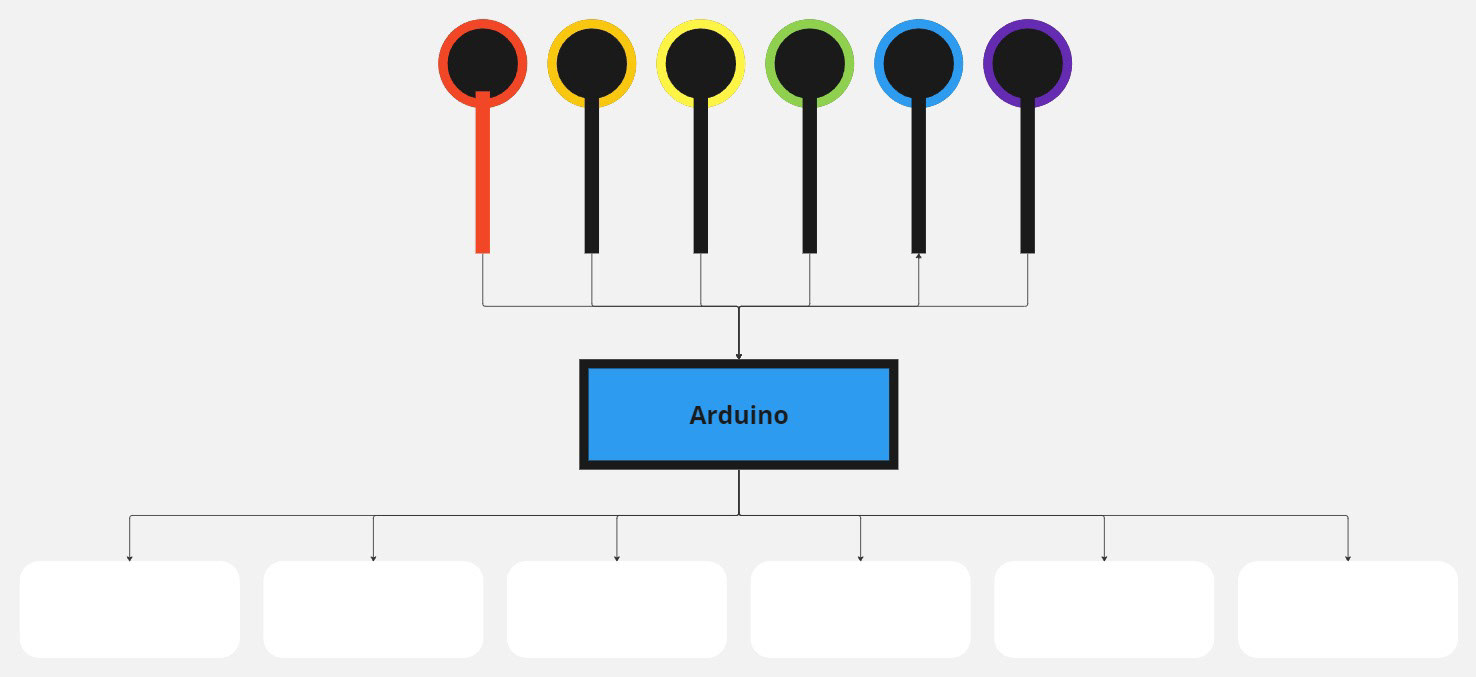
Arduino Control Logic

Sketch with Scale Specification
Design Choices
1. Can we read "Occipital Lobe"?
Even adults encountered difficulty in correctly pronouncing specialized vocabulary related to brain anatomy. Consequently, after conducting user tests with graduate students, we incorporated the pronunciation of each professional term for brain parts within medical terminology.
2. Instructive V.S. Constructive?
Initially, our information panels were static, lacking interactive elements. However, through extensive research into educational methodologies including Montessori, Jean Piaget's Cognitive Theory, Seymour Papert's Constructionism, and sensory learning, we gained insights into crafting more engaging learning experiences. We recognized that simplicity can lead to monotony, while incorporating real-life challenges adds a dynamic appeal to the learning process.
3. Replay-ability and Material Safety
To mitigate potential hazards to the human body, we consciously avoided the use of super glue or acrylic paint in our materials. Instead, we opted for softer alternatives like felt and Velcro tape. This design choice ensures that the interactions children engage in are not only effective and sustainable but also safe. Additionally, we have designated a point person who remains on hand to provide continuous supervision and support throughout the activities.
Fabrication
Connecting Capacitive Paint Sensor Pads to Arduino Uno
Capacitive Paint test

